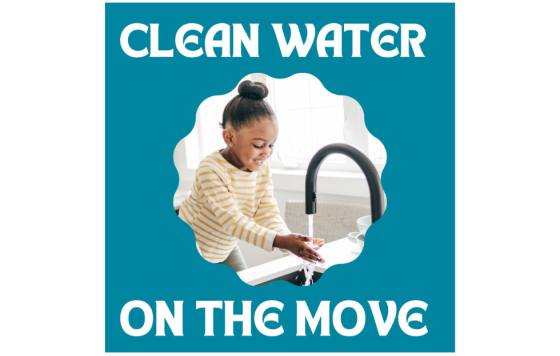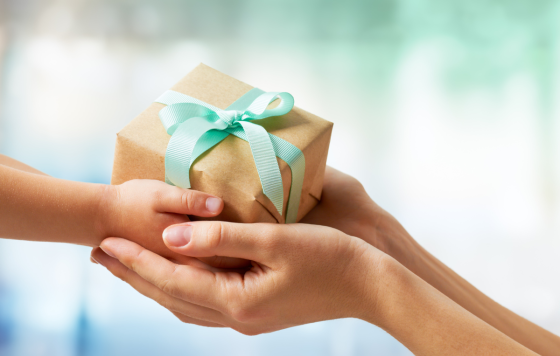
Water is essential to life. Ensuring that every community has access to clean, safe water requires efficient, and equitable management of clean water funding. The State Revolving Funds (SRFs) are how the federal government funds improvements to water infrastructure. The current practice of using SRF funds for Congressional “earmarks” - also known as congressionally directed spending, puts the SRFs at risk. Here is why:
The Role of State Revolving Funds
To understand federal water infrastructure financing, it is essential to understand the role that SRFs play in our environment and public health landscape. The SRFs, which include the Clean Water State Revolving Fund (CWSRF) and the Drinking Water State Revolving Fund (DWSRF), are federal-state partnerships designed to create sustainable financing for a wide array of water quality projects. These funds are critical in supporting everything from major infrastructure projects to smaller community-led initiatives. The SRFs help ensure safe drinking water and proper wastewater treatment, along with many other water quality benefits.
The SRFs are allocated through the congressional appropriations process. Each year, Congress approves a specific amount of money that will be doled out to the States through capitalization grants. The amounts each State receives depends on which SRF program. For the DWSRF, amounts are determined through the Drinking Water Needs Survey that occurs every four years. The States with the most need in accordance with the survey receive the most funding per capita. The CWSRF’s allocation formula is currently under scrutiny and may be revised in the coming years. This formula is set and has been unchanged since the CWSRF’s inception. Due to this formula being set, the number of dollars a State receives is more predictable from year to year. The capitalization grants have been buttressed by the billions of additional funding given to the SRFs through the Bipartisan Infrastructure Investment and Jobs Act (BIL) over the next couple of years, which has hidden some of the impacts that earmarks have made on the SRFs.
The States have considerable leeway in how they fund projects with their capitalization grants. Each year the States write out their reasoning for funding or prioritizing certain projects for approval by the United States Environmental Protection Agency (EPA). Through that reasoning, the States will create a shortlist of the projects they intend to fund over the next fiscal year. This list is often called the Project Priority List (PPL). PPLs are meant to create merit-based or needs-based allocation processes for the SRFs that are easily traceable and understood.
The Problem with Earmarks
Earmarks, now known as congressionally directed spending, allow members of Congress to allocate funds to a specific project based on the merits that meet the priorities of the Congress. These can often be a good thing, a way to get money in the hands of communities in need of funding, or to see a project built faster than would normally be possible. Over the last few appropriation cycles, Congress has begun showing support for water infrastructure needs by way of earmarks. These earmarks have good intentions, but lead to unintended results, specifically because the funds are taken away from the SRF capitalization grants. Earmarks often circumvent the intended merit-based or needs-based allocation processes of SRFs. Since 2022, Congress has used $3.73 billion (or over 40% of the overall amount) of annual federal funding to the States in favor of earmarks1. Here is why that is problematic:
1. Encouragement of Short-Term Thinking
Earmarking tends to favor projects that are poised to deliver quick, visible results. This short-term focus can divert attention and resources from longer-term investments in water infrastructure that are desperately needed to ensure sustainability and resilience against future challenges.
Because earmarks are provided as grants to the projects themselves, and the funds are not given to the agencies and authorities that administer the SRFs in each state, there will be a reduction in flexibility and funding for the loan administrators. This could lead to reduced or eliminated services of longstanding programs that were funded through the flexible funds provided by the capitalization grants. Such longstanding programs typically provided technical assistance to potential applicants to assist them in workforce issues or engineering needs.
The grants to individual projects also remove the “revolving” nature of the SRFs. Because loans were often given at low interest to many projects, with loans paid off over time, the SRFs were able to have a level of self-sustainability. Often, the money accrued through interest has been able to go back into the programs and ensure States are well staffed and resources are available to run their programs. Earmarks present a significant loss of revenue for States. The long-term loss to States nationwide will be 26 percent greater than the dollars earmarked. This means $2.3 billion earmarked equals $2.9 billion lost.2 Without the returns on interest, much greater federal funding would be required to keep the SRFs working.
2. Inequitable Distribution
There are winners and losers under the current earmark allocations. Because earmarks are taken out prior to the reallocation processes of the DWSRF and CWSRF, States are receiving more money or less money than they normally would depending on if their State received earmarks or not. Politico recently wrote, “Some states with powerful lawmakers are getting far more money from the State Revolving Funds than they would have under the traditional formula—and states with lawmakers who didn’t push for their home-state projects are getting far less.” This means States lost millions of dollars that would normally go to clean water projects. In an extreme case, The Environmental Policy Innovation Center mentioned in their 2022 report that Texas had lost over $40 million in funds due to earmarks.3
3. Reduced Accountability
When water infrastructure funds are earmarked, they bypass the rigorous review process that typically governs SRF allocations. These processes are designed to assess the merit and impact of proposed projects but also to ensure financial environmental accountability. Earmarks can sidestep these critical oversight mechanics, potentially leading to less efficient or effective use of funds.
The Path Forward
To protect our water resources effectively and equitably, it is crucial to resist the allure of earmarks and instead strengthen the integrity and effectiveness of the State Revolving Funds. We can advocate for several key reforms.
- Enhanced Transparency: By increasing transparency in how projects are selected, and funds are distributed, we can build trust and ensure fairer access to critical resources. Clean Water Action’s report in 2023 highlights that 58% of States’ programs provide extraordinarily little or no information on what projects have been funded.
- Stronger Community Involvement: Ensuring that communities, particularly those that are undeserved, have a voice in setting priorities can help align investments with actual needs. A greater level of transparency on when public comment periods occur would help to facilitate this. In Clean Water Action’s report, we determined that 62% of States gave no notice of when public comment periods were taking place, or only gave notice in ways that would be difficult for the average user to find.
Water is too important to our survival for uncertain and unproven processes that are inherently tangled up in politics. Let us call on leaders to commit to fair, accountable, and strategic funding decisions. For the sake of our health, our environment, and future generations, we must advocate for a clean water agenda that truly meets the needs of all communities.
By prioritizing integrity over influence in funding our water projects, we ensure that every dollar moves us closer to a world where everyone can turn on the tap with confidence, knowing their water is safe, and clean. Let us make sure that our actions today do not just respond to current needs, and instead safeguard our water’s future.
1. Council of Infrastructure Financing Authorities - https://www.cifanet.org/congressional-earmarks
2. Association of State Drinking Water Administrators. “Hidden Consequences: How Congressionally Directed Spending Impacts State Drinking Water Programs.” https://www.asdwa.org/wp-content/uploads/2023/12/Hidden-Consequences_How-Congressionally-Directed-Spending-Impacts-State-Drinking-Water-Programs.pdf
3. Environmental Policy Innovation Center - https://www.policyinnovation.org/blog/who-benefits-from-state-revolving-fund-earmarks



